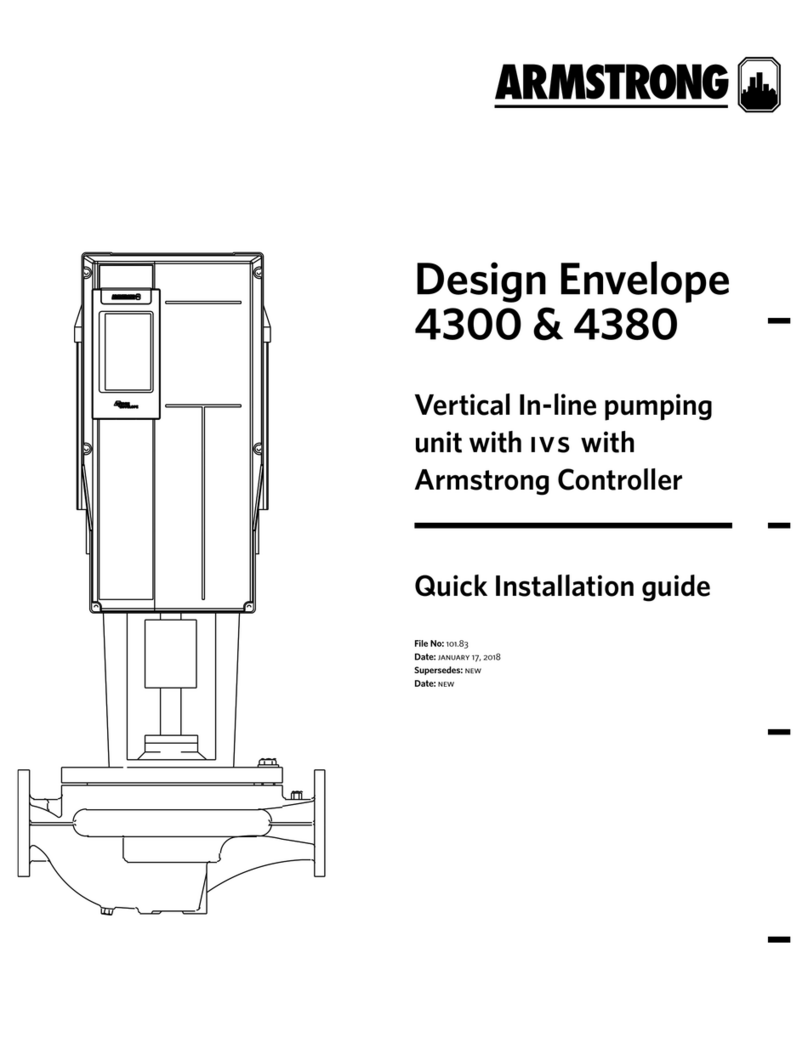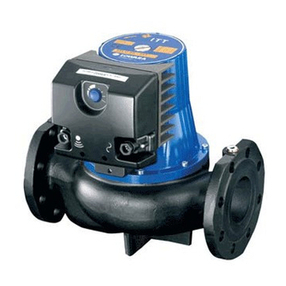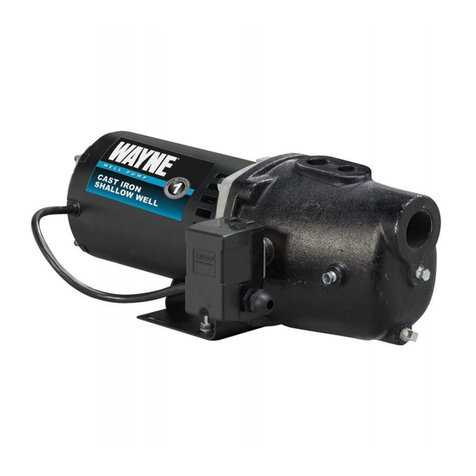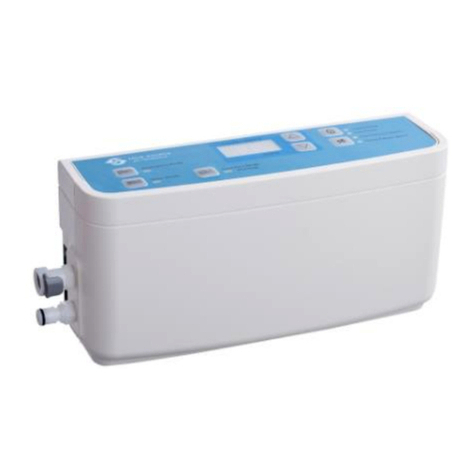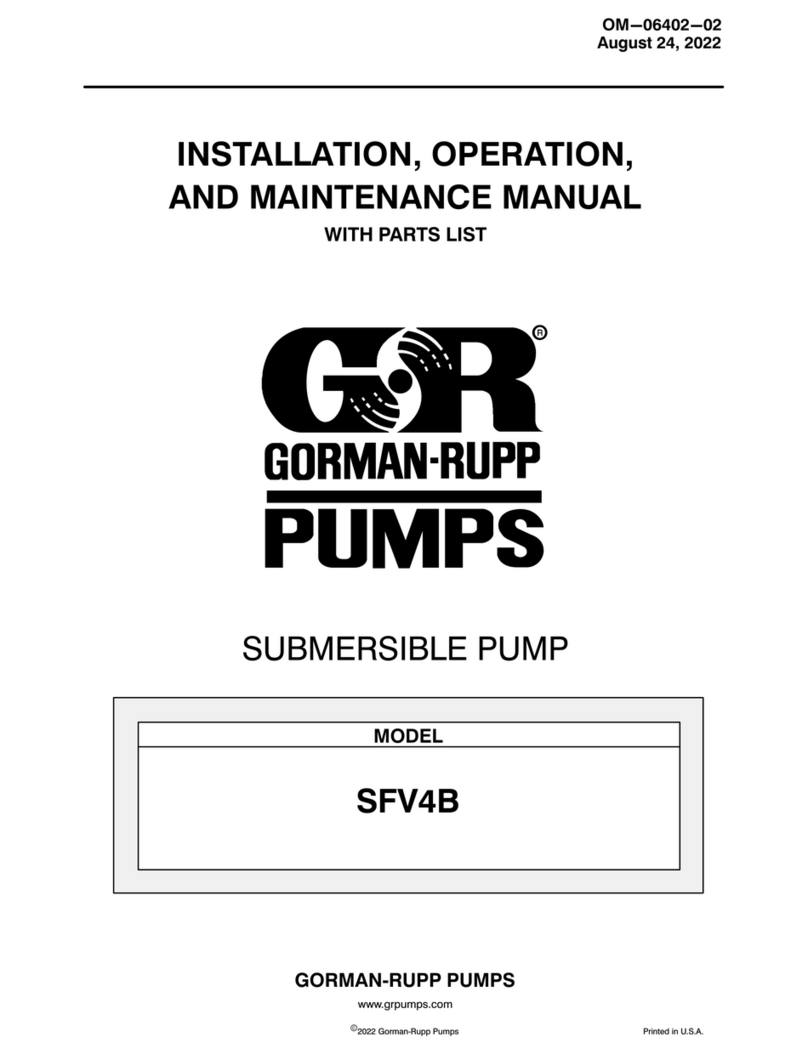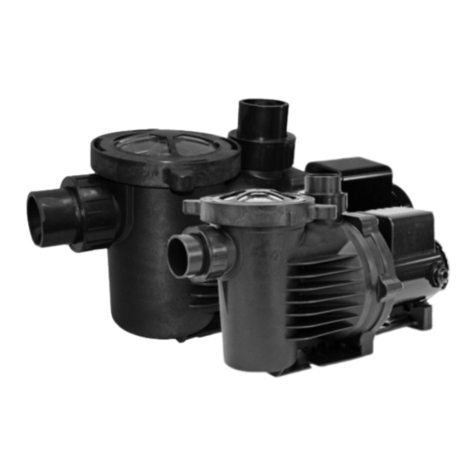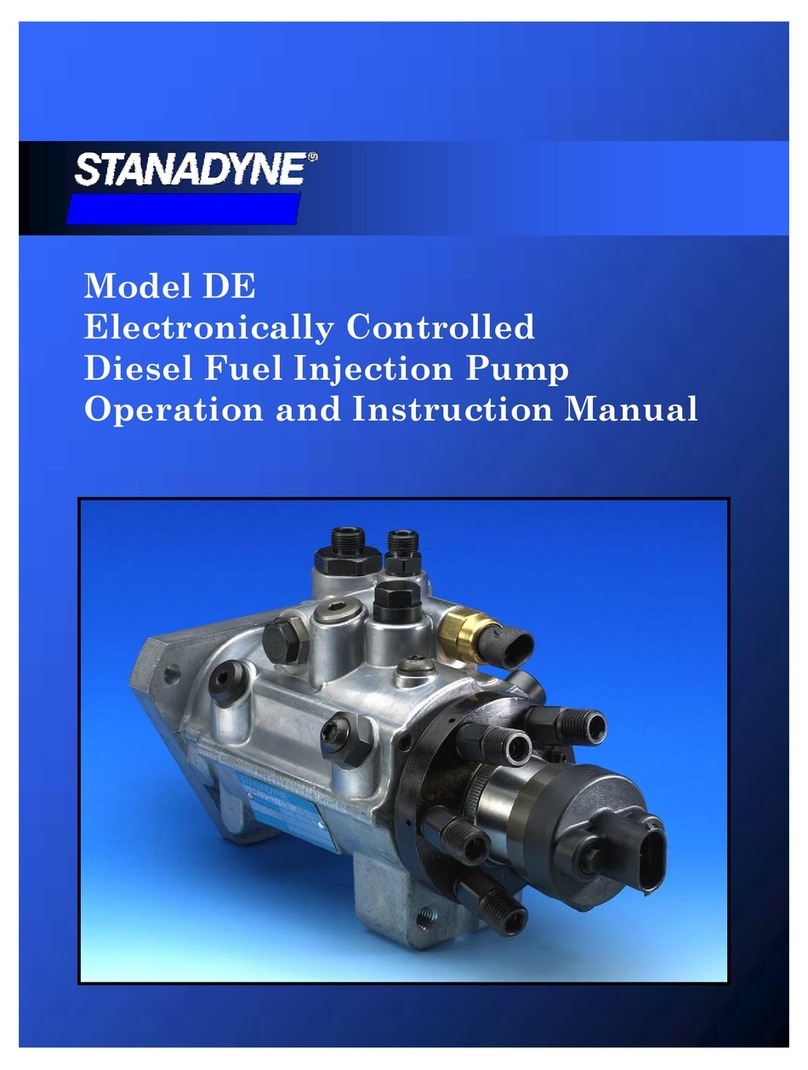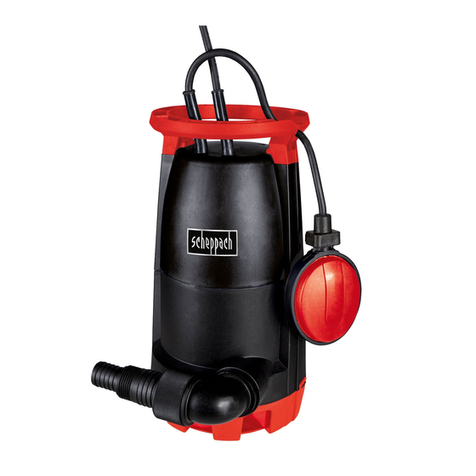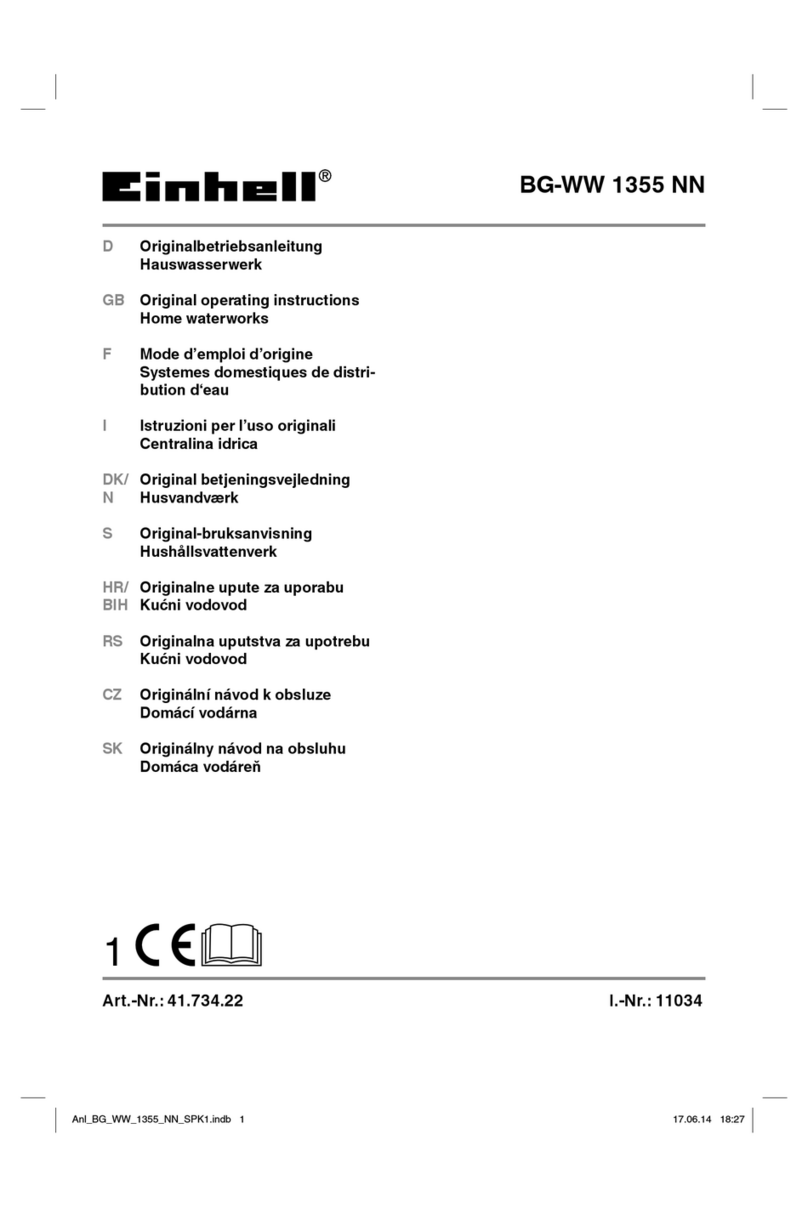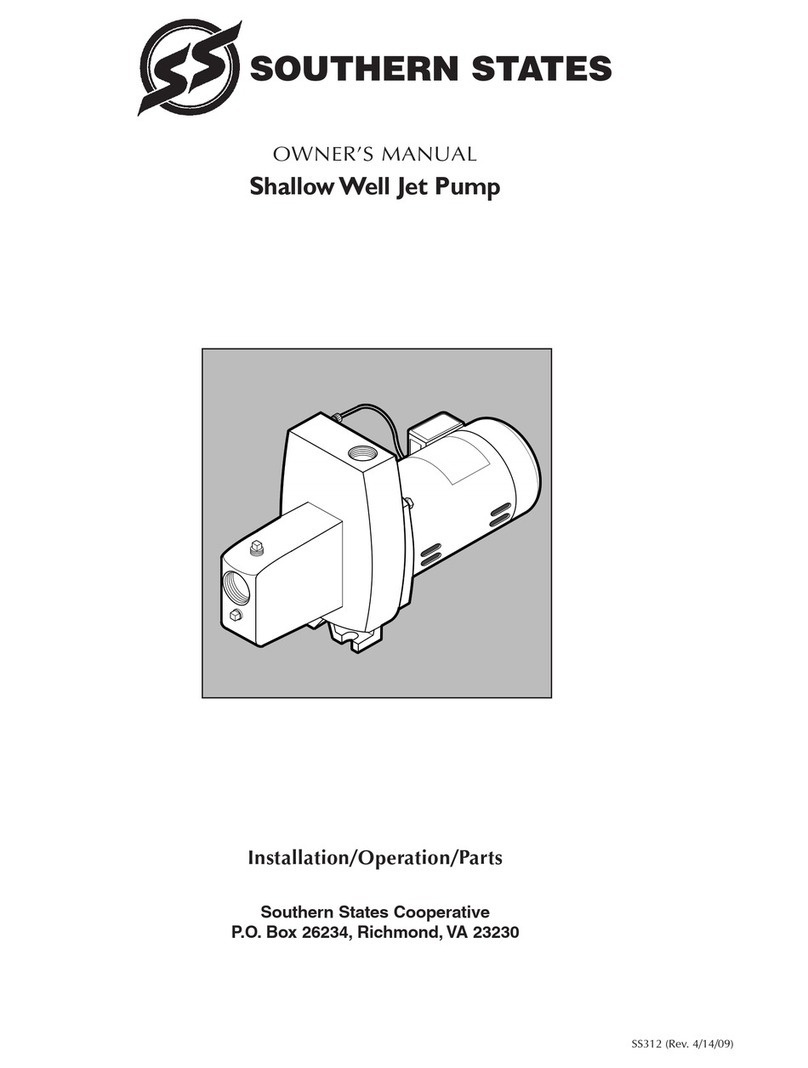SYMPTOM POSSIBLE CAUSE(S) CORRECTIVE ACTION
Motor will not run Disconnect switch is off Be sure switch is on
Fuse is blown or circuit breaker tripped Replace fuse or reset circuit breaker
Starting switch is defective DISCONNECT POWER; Replace starting switch
Wires at motor are loose, Refer to instructions on wiring (Page 9). DISCONNECT POWER; check and
disconnected, or wired incorrectly tighten all wiring.
Capacitor voltage may be hazardous. To discharge
capacitor, hold insulated handle screwdriver BY THE HANDLE and
short capacitor terminals together. Do not touch metal screwdriver
blade or capacitor terminals. If in doubt, consult a qualified electrician.
Pressure switch contacts are dirty DISCONNECT POWER and file contacts with emery board or nail file.
Motor runs hot and Motor is wired incorrectly Refer to instructions on wiring
overload kicks off Voltage is too low Check with power company. Install heavier wiring if wire size is too small
(See Electrical / Wiring Chart).
Pump cycles too frequently See section below on too frequent cycling
Motor runs but no Pump in new installation did In new installation:
water is delivered* not pick up prime through:
1. Improper priming 1. Re-prime according to instructions
2. Air leaks 2. Check all connections on suction line, AVC and ejector
3. Leaking foot valve or check valve 3. Replace foot valve or check valve
Pump has lost prime through: In installation already in use:
1. Air leaks 1. Check all connections on suction line and shaft seal
2. Water level below suction pipe inlet 2. Lower suction line into water and re-prime. If receding water level
in well exceeds suction lift, a deep well pump is needed.
Foot valve or strainer is plugged Clean foot valve or strainer
Ejector or impeller is plugged Clean ejector or impeller
Check valve or foot valve is stuck shut Replace check valve or foot valve
Pipes are frozen Thaw pipes. Bury pipes below frost line. Heat pit or pump house.
Foot valve and/or strainer are Raise foot valve and/or strainer above bottom of water source.
buried in sand or mud Clean foot valve and strainer.
Water level is too low for shallow well A deep well jet package may be needed (over 25 ft. to water) to deliver
setup to deliver water water to full capacity
Pump does not Water level in deep well is lower than Replace nozzle and venturi with correct combination for the well; lower
deliver water to full estimated the ejector to correct level in the well
capacity Steel piping (if used) is corroded or Replace with plastic pipe where possible, otherwise with new steel pipe
limed, causing excess friction
Piping is too small in size Use larger piping
Pump delivers water but
Pressure switch is out of adjustment or DISCONNECT POWER; adjust or replace pressure switch
does not shut off or contacts are welded together
pump cycles too Faucets have been left open Close faucets
frequently Venturi, nozzle or impeller is clogged Clean venturi, nozzle or impeller
Water level in deep well is lower than
estimated Replace nozzle and venturi with correct combination for the well
Standard pressure tank is waterlogged Drain tank to air volume control port. Check AVC for defects. Check for
and has no air cushion air leaks at any connection.
Pipes leak Check connections
Foot valves leak Replace foot valve
Air charge too low in pre-charged tank DISCONNECT POWER and open faucets until all pressure is relieved
Using tire pressure gauge, check air pressure in tank at valve stem
located on the tank. If less than pressure switch cut-in setting (30-50
PSI), pump air into tank from outside source until air pressure is 2 PSI
less than cut-in setting of switch. Check air valve for leaks (use soapy
solution) and replace core if necessary.
Air spurts from faucets Pump is picking up prime When pump picks up prime, all air will be ejected
Leak in suction side of pump Suction pipe is sucking air. Check joints for leaks.
Well is gaseous Consult factory about installing a sleeve in the well
Intermittent over-pumping of well. Lower foot valve if possible, otherwise restrict pump discharge
(Water drawn down below foot valve.)
Troubleshooting 13
* (Note:
Stop pump;
then check prime
before looking for
other causes.
Unscrew
priming
plug and see if water
is in priming hole).
















